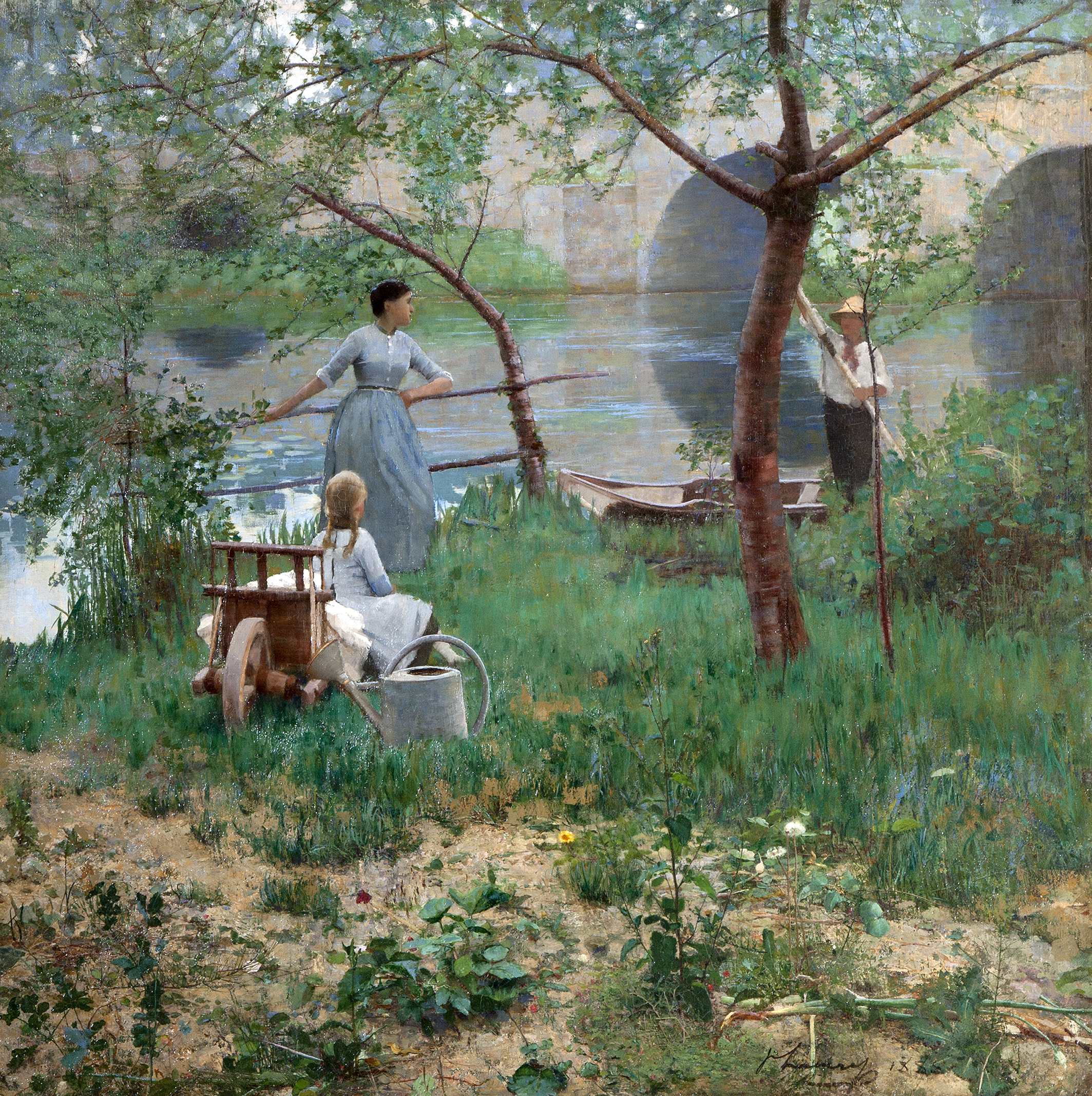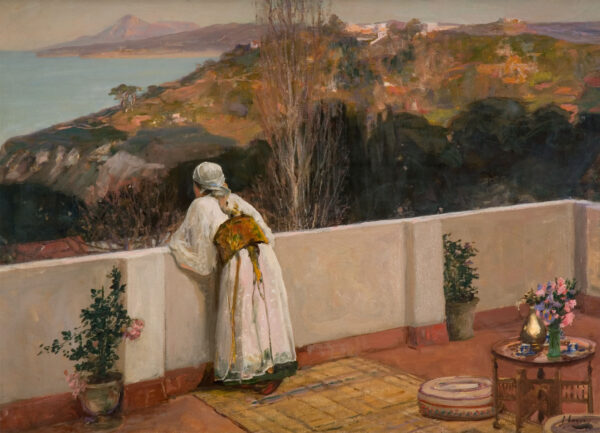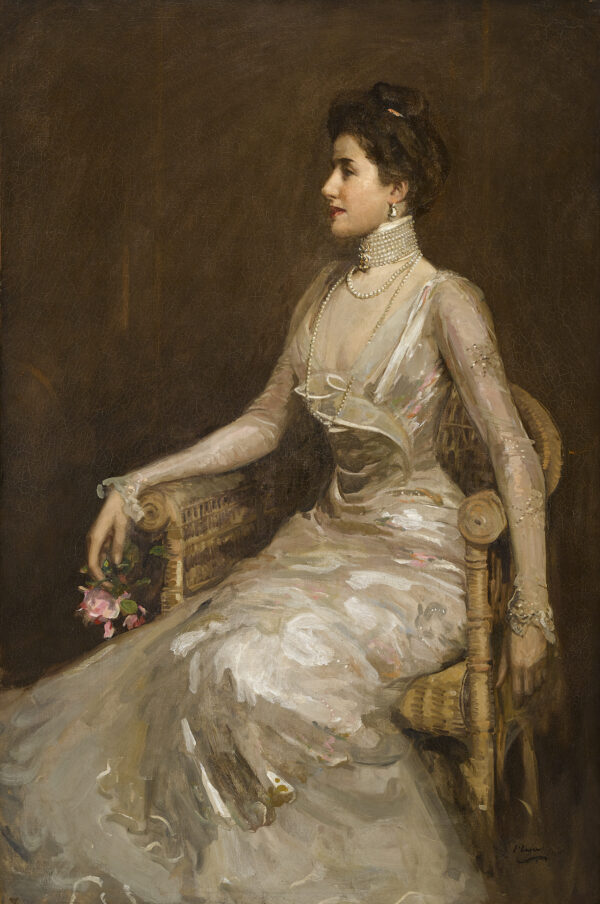National Gallery of Ireland presents Lavery: On Location, a showcase of paintings created by the artist during his many journeys
By Brian Bowe
If you haven’t gotten the chance yet, I’d strongly recommend you visit National Gallery of Ireland’s latest exhibition: a stunning collection of works by Belfast-born painter John Lavery.
On view in the Beit Wing till Sunday, January 14th, Lavery: On Location, organised by the National Gallery of Ireland in collaboration with National Museums, Northern Ireland and National Galleries, Scotland, focuses on key destinations in Lavery’s art. These range from scenic landscapes of Scotland to the sun-soaked Palm Springs.
While Lavery gained recognition for his iconic portraits of notable figures (and, of course, for his contribution to the design of the Irish banknote that portrayed his wife Hazel), Lavery: On Location showcases Lavery’s versatility, celebrating him as a painter of landscapes and leisure, an artist whose ability to create pieces went far beyond portraiture. Lavery travelled the world studying art. His unwavering commitment to his craft was evident as he made sure to always carry his painting kit with him, ready to capture the beauty and inspiration he encountered along his travels.

“[the exhibition] focuses on the people, locations and sensations that John Lavery encountered in a life rich in travel and experience and shows a new dimension to the work of this much-loved painter,” said Director of the National Gallery of Ireland, Dr Caroline Campbell.
The first painting bound to catch your eye is On the Loing: An Afternoon Chat (Under the Cherry Tree) (1884). This piece garnered immediate attention from critics when shown at the Glasgow Institute in 1885. Note how Lavery skillfully employs various techniques in his artwork to evoke a remarkable sense of spatial depth.

The middle section of the exhibition focuses on Lavery’s time in Morocco, full of low horizons and wide expanses of azure sky. Arriving in Tangier in 1891 – a destination the artist would continue to visit regularly up until 1920 – Lavery tirelessly explored the city. During his initial visit, he immersed himself in the vibrant urban landscape and created a memorable work titled Snake Charmers set in a bustling open-air marketplace.
As the years progressed, he continued his quest by embarking on horseback journeys to nearby towns in the winter months to gather sketches and studies for larger-scale paintings. He firmly believed that commonly portrayed Orientalist subjects, such as the harem and Moorish dance, required firsthand observation to be accurately depicted. Lavery’s views over the rooftops of Tangier, as seen in Evening, Tangiers (1906) are among his most evocative canvases.
The artist’s travels in 1892 took him to cities such as Seville, Madrid, Munich, and Venice. Dublin became a regular exhibition venue for Lavery, and he also made noteworthy contributions to Hugh Lane’s groundbreaking display of Irish art in London in 1904. Recognizing the depth and breadth of Lavery’s artistic output, British art critic Robert Ross proclaimed that the painter was “no mere topographer”, but someone who caught the spirit of a place.

© Hugh Lane Gallery, Dublin
Even later in life, Lavery had a unique ability to capture a moment in time. Sunbathers (1936), one of the most eye-catching works on display due its vibrant use of colour, was painted during a trip to Palm Springs, California, a journey Lavery described as an ‘irresponsible’ and ‘bohemien’ return to the days of his youth. No painting illustrates this sentiment better than The Walnut Tree (1937), wonderfully displayed in the exhibition’s last room. It beautifully captures the essence of youth, innocence and the untamed spirit of a child, and is one of my favourites.
Though, if I had to pick just one painting, it would be Lavery’s La Dame aux Perles (1901). One of the painter’s German portraits, La Dame aux Perles is of theatre actress Margit Höllrigl. This particular portrait garnered considerable admiration for its exquisite slender grace and elegance. It calls to my mind the work of John Singer Sargent, especially his portrait Lady Agnew of Lochnaw (1892).
Speaking to RTÉ, Kenneth McConkey, Emeritus Professor of Art History at the University of Northumbria spoke about the importance of seeing Lavery’s work in today’s modern world of constant and ubiquitous visual pleasure: “The answer is simply that he provides us with a world picture that spans the turn of the twentieth century when the issues we face had scarcely surfaced.
“This is not to deny the complexities of his era, but simply to observe that in no ordinary way he vividly reported on the people and places he saw around him … these things come from crafted paint surfaces that stop us in our tracks and by lifting our eyes we discover in them a more satisfying and sustainable sense of visual pleasure.”
Lavery: On Location, curated by Dr Brendan Rooney and Prof Kenneth McConkey, runs until January 14th, 2024; adult tickets cost €10.80-€16.20 plus booking fee; student tickets cost €7.20-€10.80 plus booking fee; senior and jobseeker tickets cost €9-€13.50 plus booking fee; child and carer tickets are free.



